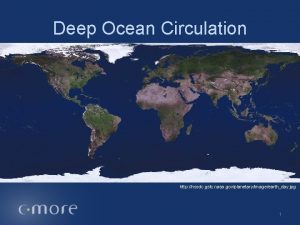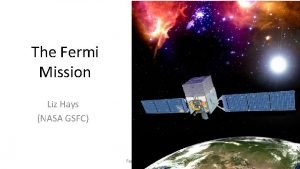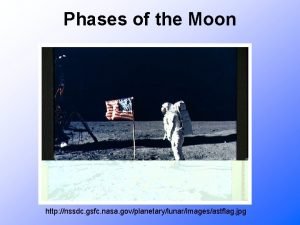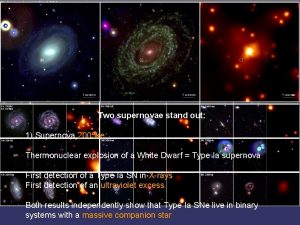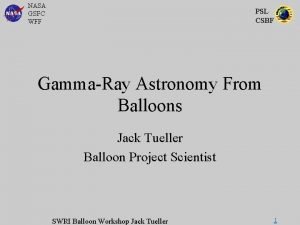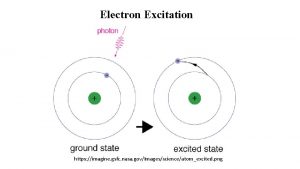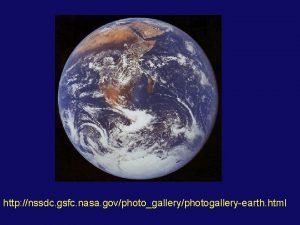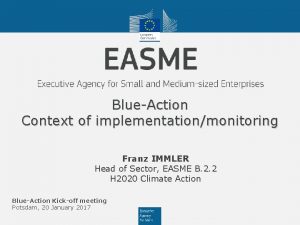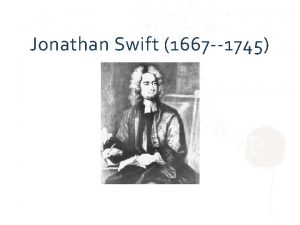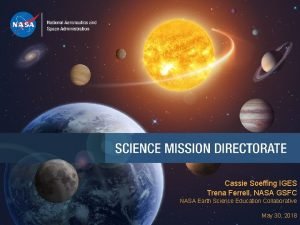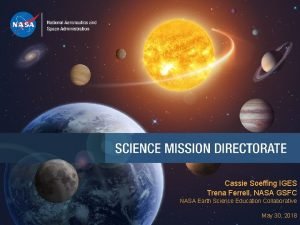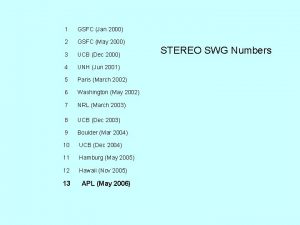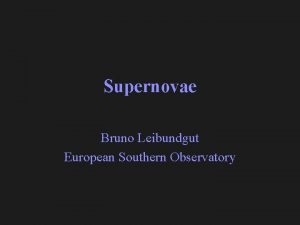Stefan Immler NASA GSFC Swift Mugshots of Supernovae










- Slides: 10

Stefan Immler / NASA GSFC Swift Mugshots of Supernovae Two supernovae stand out: 1) Supernova 2005 ke: Thermonuclear explosion of a White Dwarf = Type Ia supernova First detection of a Type Ia SN in X-rays First detection of an ultraviolet excess Both results independently show that Type Ia SNe live in binary systems with a massive companion star

Stefan Immler / NASA GSFC Supernova 2005 ke Ultraviolet lightcurves of Type Ia supernovae UV lightcurve shapes of Type Ia supernovae are surprisingly similar … except:

Stefan Immler / NASA GSFC Supernova 2005 ke • Excess ultraviolet emission detected for SN 2005 ke • Caused by the interaction of the supernova shock with dense material in its surrounding: evidence for a companion star

Stefan Immler / NASA GSFC Supernova 2005 ke Ultraviolet X-rays • First detection of a Type Ia SN in X-rays from CSM interaction • Mass-loss rate of the progenitor’s companion 3 10 6 M yr 1 • CSM density 4 107 cm 3 at a distance of 3 1015 cm

Stefan Immler / NASA GSFC Supernova Ia Systems White Dwarf I) Massive Star White Dwarf II) A thermonuclear (Type Ia) supernova is a white dwarf that accrets matter from a companion star and explodes as it reaches the Chandrasekhar mass (1. 4 x Sun). Unsolved question: what is the companion star? Two scenarios how thermonuclear SN (Type Ia) systems could look like

Stefan Immler / NASA GSFC Two supernovae out: Swift Mugshots ofstand Supernovae 2) Supernova 2006 bp: Core-collapse of a massive star = Type II supernova Earliest detection of a normal core-collapse SN in X-rays (<1 days) The X-rays are produced by the SN shock running into dense material around the star, deposited by the stellar wind of the progenitor

Stefan Immler / NASA GSFC Supernova 2006 bp X-rays, week 1 going … X-rays, week 2 going … • Daily Swift observations allow timing analysis of X-ray flux • The supernova faded away within a two week period • SN would have been missed with any other observatory X-rays, week 3 gone!

Stefan Immler / NASA GSFC Supernova 2006 bp

Stefan Immler / NASA GSFC Probing the Supernova Shock The outgoing shock wave travels at a high speed (some 10, 000 km/s) and will eventually catch up with the stellar wind that was blown off over the last tens of thousand of years before the star exploded. The shock wave heats the material to millions of degrees and will give off highenergetic radiation: Ultraviolet and X-rays emission

Stefan Immler / NASA GSFC The Swift Observatory Swift (launched on Nov 2004) has Gammaray Telescope (BAT), and X-ray telescope (XRT) and an optical/UV telescope (UVOT). Due to its multi-wavelength coverage, combined with its fast response time (designed to study Gamma-Ray Bursts) Swift is ideally suited to study the interaction of a supernova shock with its environment. With Swift we are getting to SN explosions earlier than with any other mission. We can probe the environments of supernovae in previously unobserved wavelengths, pioneering an entire new area of supernova research

